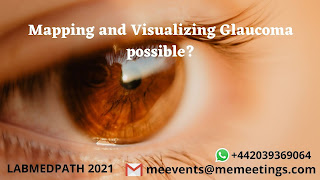Mapping and Visualizing Glaucoma possible?
Glaucoma is the leading cause of
global irreversible blindness, affecting more than 70 million people worldwide
between the ages of 40 – 80. Tests to diagnose and understand the impact of
disease are well established, however, the actual patient experience of
glaucoma-affected vision has been confined to epidemiologic descriptions
of function and imprecise visualization of what the patient sees. Many patients
diagnosed with early-stage glaucoma are prescribed life-long therapies, yet
they experience minimal visual distortions. The eventual, long-term impact of
glaucoma on their activities of daily living and quality of life eludes them,
reducing chances for treatment compliance. Furthermore, the limited visual
depiction of the disease may prevent providers and family members from
providing empathetic care and support.
Breast cancer is currently the
second major cause of death for women in the US (American Cancer Society 2019).
New research has highlighted the significance of the tumor ‘vasculome’ in the
progression, metastatic potential, and prognosis of breast tumors (Junttila and
de Sauvage 2013). The vasculome encompasses an interdependent web of
morphological (i.e. diameter, length, microvascular density), functional (i.e.,
oxygenation,
shear stress, flow rate) and other complementary data (e.g., genomic profiles)
that characterize a vascular tree. The vasculome shapes the tissue
microenvironment, and specifically in cancer, results in the creation of a
unique tumor microenvironment (TME). This TME exerts selection pressure on
cancer cell populations and profoundly impacts their survival, proliferation,
metastatic potential, and response to therapy.
Medical and clinical discoveries
through autopsies have informed hundreds of studies elucidating
pathophysiological developments of diseases, which are crucial for improving
medical treatment. At Johns Hopkins Hospital (JHH), all families of patients
who have been inpatients within the past year have the right to an autopsy.
This service requires consent of the deceased patient’s next-of-kin. It is
important for clinicians to provide empathy while effectively communicating
the medical significance and benefits an autopsy can provide for the patients’
families, when asking for consent. However, clinicians frequently find
themselves unprepared for this important conversation for two main reasons: 1)
lack of training opportunities and 2) lack of educational materials organizing
the process of asking for autopsy.




Comments
Post a Comment